Table for Two with Nadine Choe
Nadine Choe of The Stanza brings a rare clarity to the way we think about fashion, hospitality, and the value of taste— plus an insider’s eye on Milan’s most stylish corners.
Table for Two is where I chat with tastemakers who inspire me with their stylish travels and distinctive perspectives. Few people articulate the intersection of fashion and hospitality quite like Nadine Choe from The Stanza. Her perspective is sharp, her insights nuanced, and her approach—viewing these industries through an investment lens—feels more relevant than ever. Because at the end of the day, taste is capital.
Through The Stanza, Nadine unpacks the business of desirability, the mechanics of cultural influence, and what makes a brand—or space—truly enduring. In our conversation, she shares her perspective on the future of luxury, the evolving landscape of hospitality, and her go-to spots in Milan…timely, with Milan Design Week just around the corner.
Hi! Excited to have you here- can you please give us a brief introduction on yourself?
I’m the founder of The Stanza, a media platform discussing hospitality & fashion from an investor’s perspective. Before The Stanza, I spent nearly a decade in real estate private equity & development in New York and LA, the last 3 years of which I spent at Cain International structuring development capital for One Beverly Hills, a $5B project that will include a new Aman Hotel & Residences. During my time at Cain, I had the opportunity to underwrite several members clubs from a real estate investment perspective, which gave me the insights that have attracted the audience I have today for The Stanza.
You bring a unique perspective to fashion and hospitality, blending creative industries with business insights. Was there a defining moment that sparked your interest in this space?
As a kid, I used to “play restaurant”. I’d type up menus and print them on fancy paper and cook for my friends. Instead of watching cartoons, I’d watch Ina Garten on Food Network and The Travel Channel. I was lucky that my parents took us traveling all over the world so I had exposure early on to different cultures, cuisines, and languages. For me, a dinner service or hotel stay is a type of art performance.
My mom used to work in the textile business and she was (and still is) a very chic woman. I was also really into fashion as a teenager and was obsessed with fashion magazines - there was something so satisfying about seeing how different designers presented their collections in editorials, ad spreads, and runway shows, and what the clothes said about society and culture at the present moment.
Fashion drives culture and hospitality is the physical space in which it happens. I don’t think the two have ever not co-existed, but now with certain changes in consumer behavior, the two industries continue to become more intertwined.
Luxury is often equated with price, but you take a more strategic approach, looking at the business and cultural forces behind it. What do you think people overlook about how desirability is created and sustained?
With social media metrics as one parameter of how successful a brand is these days, I think consumers are now trained to seek short term hype and popularity instead of consistency and quality. The brands that have stood the test of time and are weathering the current storm - Prada, Cipriani, Hermes, Aman, etc - have one thing in common: consistency. It’s so easy to chase trends and what makes money in the short term, but ultimately being consistently good wins in the long run. It’s also what makes certain brands the trendsetters (and not the trend followers).
Scarcity and exclusivity have long been pillars of luxury. In an era where access is increasingly democratized, how do brands and hotels maintain allure without alienating their audience?
By not trying to be on everyone’s feed (intentionally). I know that sounds counterintuitive and it’s harder to do as a new entrant, but when a luxury brand is being loud and selling hard on social media and wanting to get as many impressions as possible, it dilutes the very essence of luxury, which is ultimately the core of desire. Less seen, more desired.
If you produce a consistently good experience or physical product, your customers will evangelize you and that is the most powerful way to gain momentum and cultural relevance. This is a hot take, but I think it’s okay to be a bit “aloof” and maintain some mystery, even if that might alienate some people. Good luxury brands know they can’t be for everyone.
Luxury fashion houses and hospitality brands both build strong emotional connections with their clientele. Do you think hospitality is becoming as much about brand loyalty as fashion—and if so, what are the key drivers of that shift?
Definitely, and even more so than fashion. Hospitality is a very human experience and being seen is a powerful driver for loyalty. Think of the neighborhood restaurant you go to regularly - the maitre d’ knows your name, which table you like to sit at, and your favorite drink order. Also, where you frequent says a lot about you, and with social media memorializing where you spend your time, people choose to frequent certain places because it says something about them.
What is a brand or space you think is doing an exceptional job of maintaining long-term desirability?
Cipriani - as a hospitality brand mainly focused on restaurants, it’s incredible that they’ve lasted for generations and continue to expand and adapt to changing consumer tastes while staying authentic to their roots. The Cipriani family continues to manage the brand and they truly understand the essence of great hospitality. Any Cipriani I go to, I know that I can expect great food and service. Again, having that consistency is really important for creating loyalty.
San Vicente Bungalows - Jeff Klein is a true hotelier who not only understands how to build and maintain an exclusive brand but also how to create value out of challenged real estate and operate a successful business. He’s taken dilapidated spaces and built them into cultural institutions (Sunset Tower Hotel and the original SVB). He also personally still curates his membership base and that’s why SVB has maintained longevity and relevancy in an increasingly crowded members club space.
From hotels to retail flagships, spaces have become more than just physical locations—they’re experiential. What do you think the most forward-thinking brands are doing right when it comes to designing spaces that last?
I think you just said it yourself - these spaces are “experiential”. Give people a reason to stop what they’re doing, come into your space, and feel something. Interior architecture and design has the power to impart emotions onto those that experience them. If you’ve ever visited the Palace of Versailles or the Sistine Chapel, you probably felt something when you walked in. Perhaps it was awe, goosebumps, or something else…but it was something and that’s why these places continue to attract visitors from around the world for centuries. Taking that very essence of conveying emotions in a physical space - whether in a subtle or more overt way - is how the best brands approach placemaking and design.
If you were designing the ideal luxury space—whether a hotel, a members' club, or a retail concept—what are the non-negotiables that would make it feel truly special?
I’d design it with the same approach as how I’m currently designing my home in Milan. I made a commitment to buy everything custom or vintage - no fast furniture and no Pinterest copy/paste! Even if it means going to countless furniture markets or not having a dining table for months, I’d rather buy for longevity than for convenience. There is a lot of contrast in the apartment, which is in a Liberty style building and dates back to the early 1900’s. The original details of the home, such as the herringbone parquet and terrazzo marble floors, crown moldings, and tall french windows are contrasted with midcentury furniture design, such as this custom Leisure Sofa by Ghidini 1961 (0:31 for the sofa reveal) and a vintage Willy Rizzo coffee table. Even after a year living in this house, I’m still working on it and can’t wait to share more photos when it’s (mostly) done! But to answer your question - I think interesting or thought provoking spaces are designed with contrast between textures, colors, materials, and periods.
You’ve lived in LA, NYC, London, and now Milan—has one been a favorite, or do you have a quick takeaway from each?
I was born and raised in LA but it’s become my least favorite! As a kid growing up there, it was a different city - it had more of a rock n’ roll vibe, but now there’s something about it that feels a bit apocalyptic. NYC is such a fantastic city because it attracts people who want to be the best at what they do. Post-Brexit London feels very different and a lot less diverse as several EU countries have set up tax incentives to attract the return of young nationals who studied or worked in places like London.
The best thing about Milan is that the Alps, London, Paris, Ibiza, are all within 2-3 hours away It’s a beautiful city with many hidden aspects, and therefore it takes time to truly discover Milan. Milanese culture can also be very old school and cold, and as an entrepreneurial and optimistic American, I’m learning how to manage the Milanese negativity (ha!).
You’re currently based in Milan, one of the great style capitals of the world. How has being based there influenced your perspective on luxury and design?
One thing I always say about the Italians is that they prefer to perfect a technique down to a T instead of innovating or optimizing towards efficiency. Because of that, you really notice how much care they put into the small things. For example, if you look up at the Liberty Style residential buildings, you’ll see the patterns underneath the terraces. But you’d only be able to see that if you were directly under a building looking up. The Italians are not “showy”, and they would do something beautifully even if only a handful of people are there to experience it. It has influenced me to appreciate the elegance of being understated and to understand what makes something “high quality”. The Italians are true aesthetes and epicureans and being surrounded by that balances out the negatives of being based here.
You recently joined Casa Cipriani in Milan, and we need the inside scoop. What makes it special, and how does it compare to other private clubs?
My husband and I had our civil ceremony reception there and we were so impressed with how gracious and hospitable the staff were. I’ve also been a Cipriani stan for so many years and have many memories from different phases of my life in various Cipriani restaurants. Beyond that, one thing that makes Cipriani better than other clubs is their consistency and their approach to hospitality. I know that I can walk in and the front desk staff will greet me by my name, and that the food and service will be some of the best I can find in Milan. That consistency is really hard to find, and it’s especially important for a members club to have that because the last thing I would want is to host a business meeting at my club and have the service and food be terrible.
The two Cipriani sisters who manage the operations, Giulia and Anna, put a lot of care into the member experience. This year, they started a monthly series called ‘Bellini Conversations’, a talk between Emanuele Farnetti (notable Italian journalist and previous EIC of Vogue Italia) and successful Italian entrepreneurs, such as Brunello Cucinelli and Nerio Alessandri. The spa situation is also great - they have a saltwater grotto and a great lounge area to relax in after a nice gym and sauna session. Casa Cipriani attracts the Milanese entrepreneurial community and other accomplished people, which makes for great people watching on any given evening.
Where do you take friends when they visit Milan for the first time?
Trattoria Milanese for traditional Lombardian food - the vitello tonnato and cotoletta are especially good here. Dal Bolognese has the best bolognese, naturally. And of course, Casa Cipriani for dirty martinis.
Milan doesn’t compare to Rome or Florence in terms of cultural activities, but there are still incredible galleries in town. I love the Gallerie D’Italia - about a year ago, I saw the Moroni exhibition and it really moved me. Giovanni Battista Moroni (1521-1580) was an Italian Renaissance painter best known for his portraits. He painted his subjects with such captivating emotional expressions, that it makes you think about how our emotions and our consciousness of them are what make us fundamentally human, century after century.
What are your favorite spots to eat in Milan—whether for a long lunch, a late-night bite, or a date night?
For lunch, Pasticceria Sissi for a deli lunch or Pasticceria Gattullo for the best sandwiches. Sissi looks like a Wes Anderson movie set and has a cute vine-covered terrace. Gattullo is a traditional and elegant Milanese pasticceria and has the best shakerato (Italian shaken iced coffee). For a more formal lunch, I love Bacaro Montenapoleone. They have a cute and charming courtyard tucked away from the street. Sometimes I’ll treat myself to a piece of Princess cake from Sant Ambroeus if I’m in San Babila.
For a chic dinner, I love Trattoria Del Ciumbia. The food is delicious and the interiors were designed by Dimore Studio - it has a 70’s vintage vibe. For something not Italian, Yapa is an incredible experience. It’s Japanese Peruvian fusion cooked in an open kitchen. Bentoteca is another Japanese fusion restaurant that is absolutely delicious. I know most people come to Milan and expect to eat Italian food, but sometimes you need something different!
For wine bars that serve natural wine and small plates: Bar Paradiso, Ultramarino, Minerale, Atypique are some regular spots.
Milan Design Week is such a key moment for the city. How do you typically spend your time during the week? Are there certain events, exhibitions, or traditions you never miss?
It’s total chaos. I try not to plan too much because there are a million events and it’s fun to be more spontaneous!
Are there any under-the-radar design studios, galleries, or pop-ups you’re especially excited about this year?
It’s not under the radar, but I’m excited to see the Artemest house. In terms of curation and viewing experience, it’s my favorite. Last year, I loved the Verner Panton room at 10 Corso Como and Locatelli Partner’s pop-up showroom.
Summer in Milan can get intense with the crowds. Do you have any favorite weekend getaways when you need an escape?
Most Milanesi are not here during the summer months because it gets way too hot, humid, and touristy (to your point). My husband and I met in Ibiza and we go every summer - I’ve been going most years since uni in London. It’s one of my favorite places in the world!

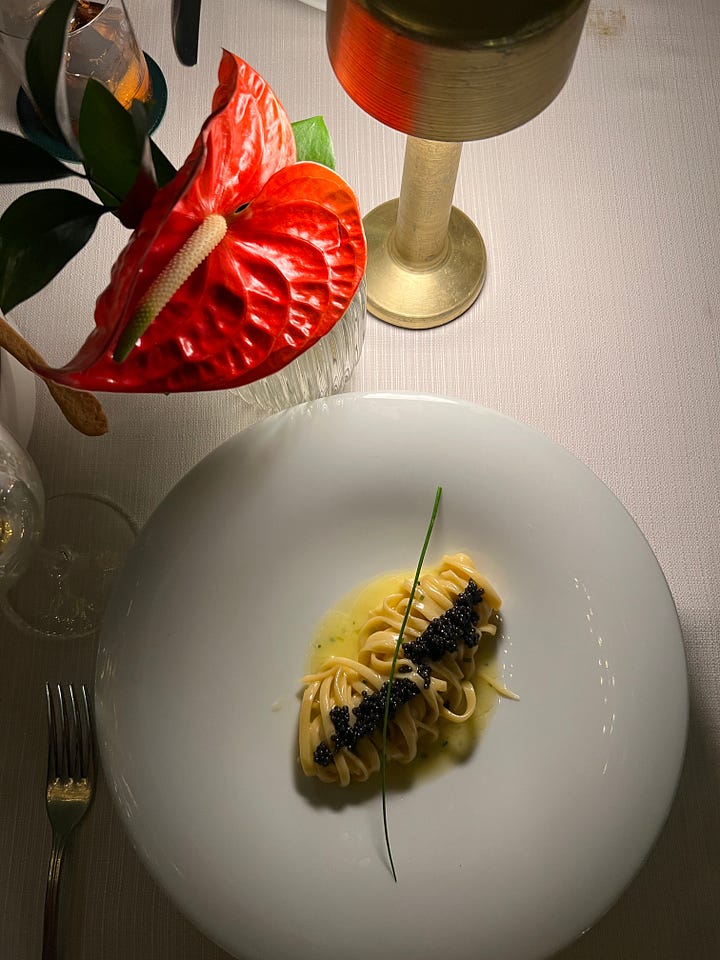
What’s a hotel that has completely won you over—not just for its design, but for the full experience?
Even though I’m not the biggest Lake Como fan, I loved staying at Grand Hotel Tremezzo. My husband took me there for my 30th birthday and I’ll never forget playing tennis with him on the clay court. He also took me to Cala di Volpe for my birthday last year, where he proposed! It’s such a beautiful hotel and the beaches in Sardinia are truly stunning.
Where are you personally excited to travel next?
I’m excited to stay at Le Grand Mazarin in Paris soon. And for our honeymoon, my husband and I are planning to go to South East Asia on a remote surf trip.
What’s a destination or experience that’s at the top of your travel list right now?
Thank you for joining another conversation, and here’s to many more engaging chats this year with tastemakers defining what it means to live and travel well. From fashion and food to far-flung destinations, I hope these stories ignite your curiosity and inspire your next travels.


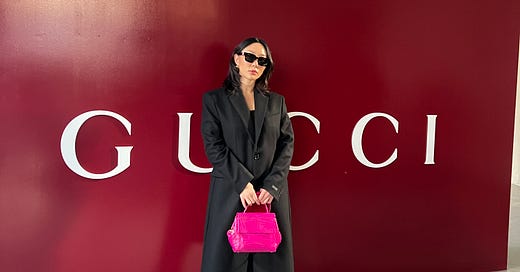






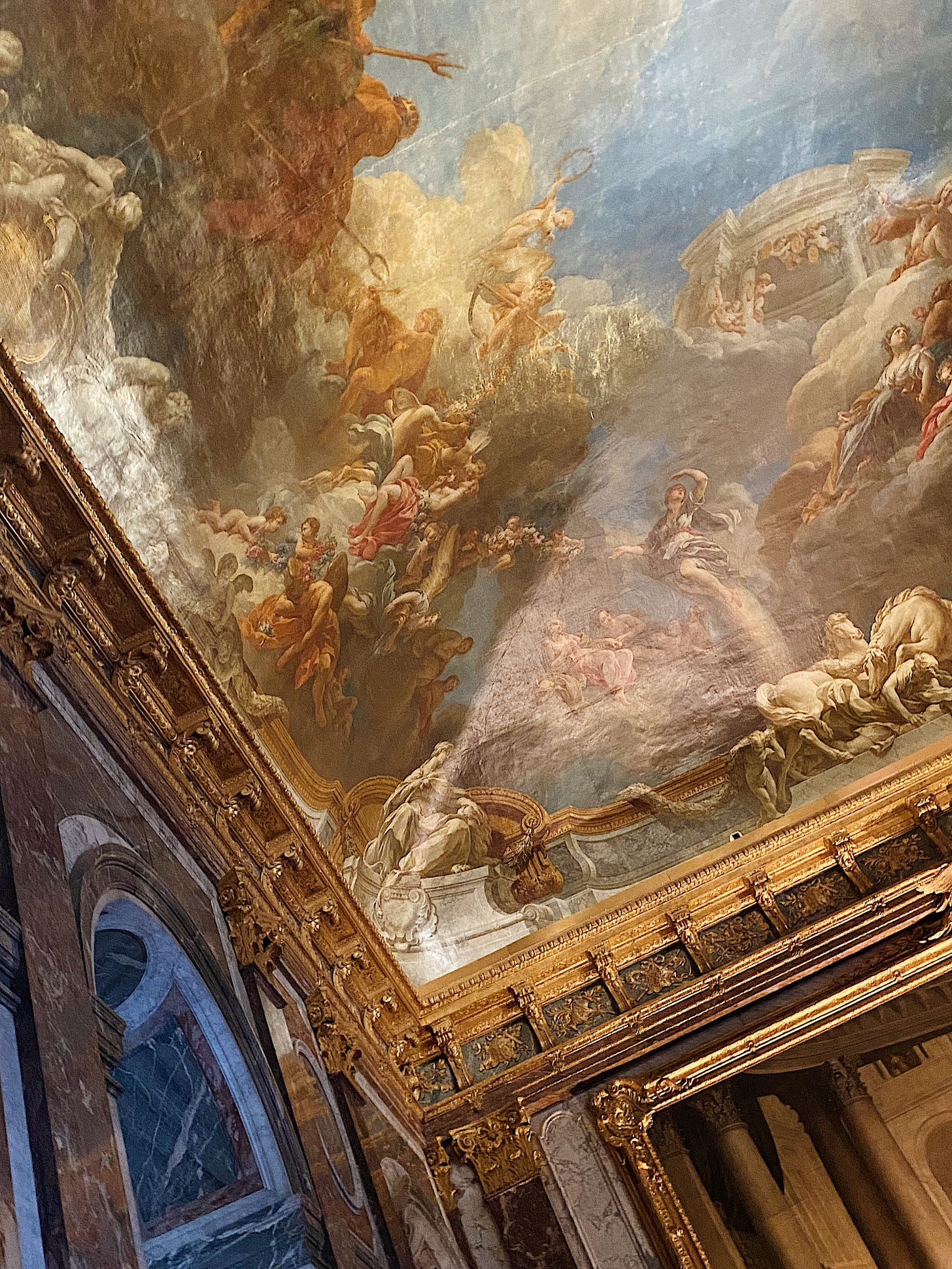

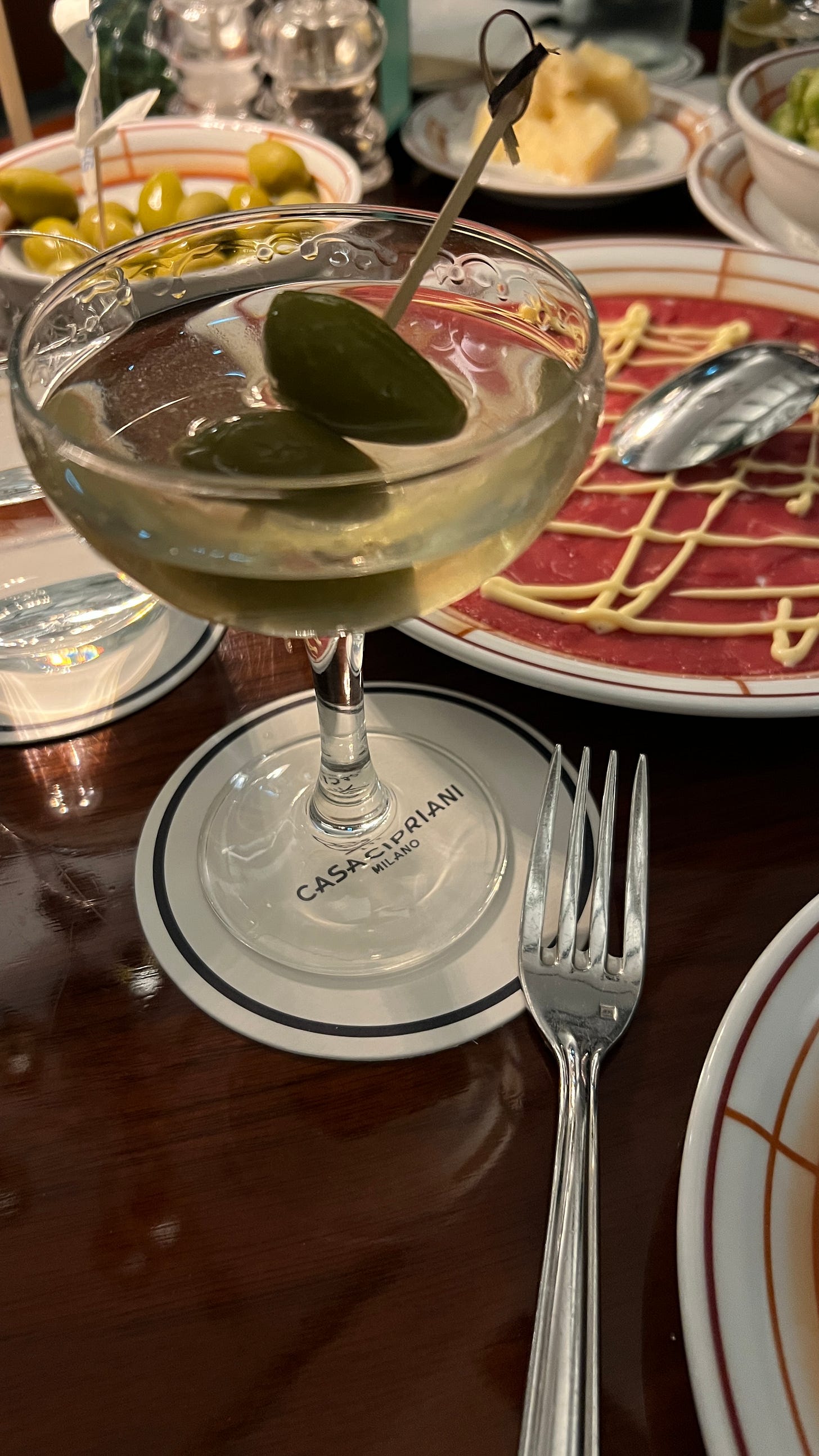
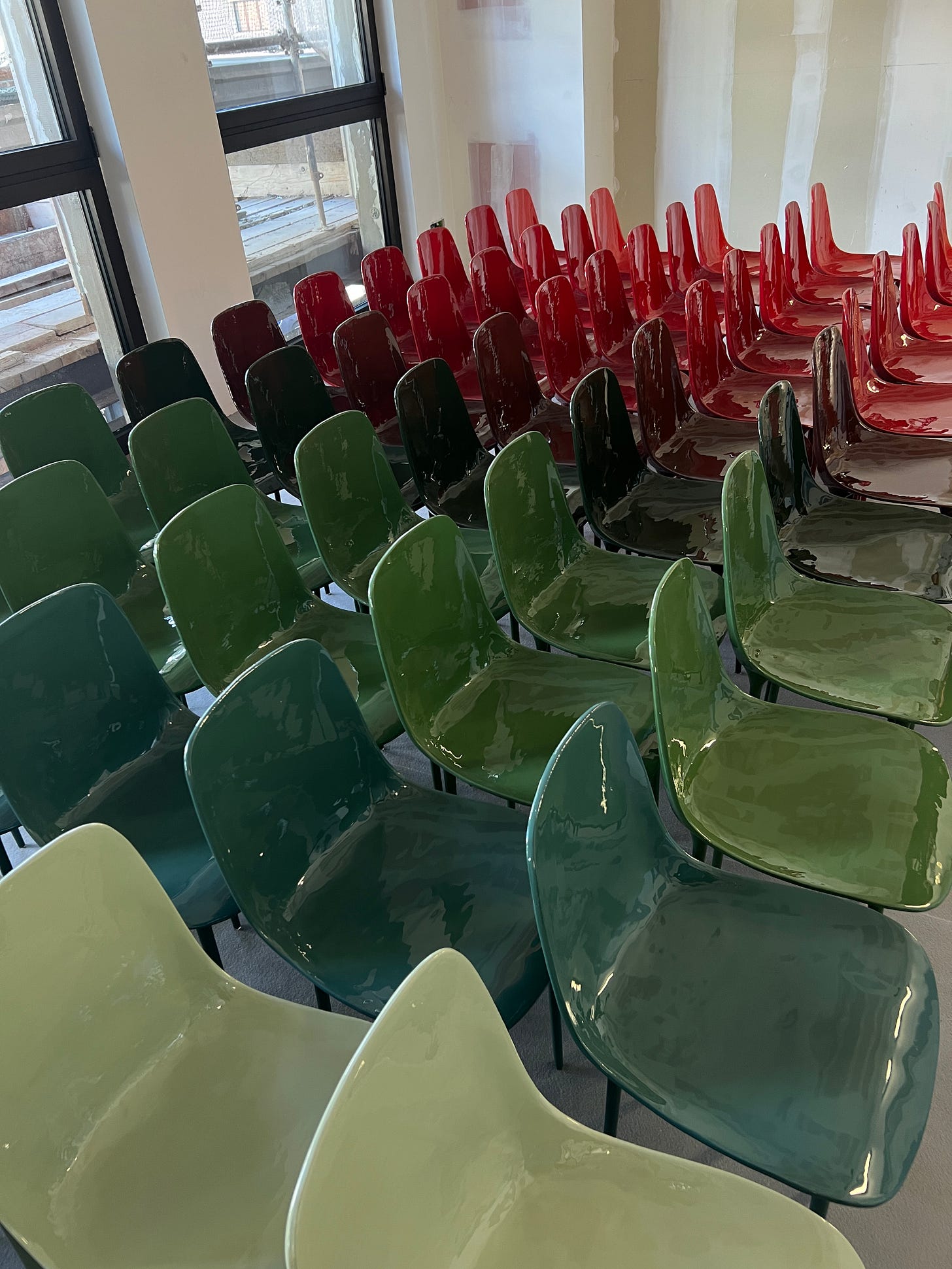

OMG drooling over all of this!
Hellooo now I want to go to Milan 💌 can we add to my next Europe itinerary ??